Reviews
Rudolph Maté
USA, 1955
Credits
Review by Evan Kindley
Posted on 05 August 2009
Source Sony Pictures DVD
Categories Women of the West
After any war, there is an inevitable period of adjustment for the participants, who, having learned how to kill people, have to relearn how to live with them. Such periods may be some of the most interesting and transformative periods in the life of a society, but they’re probably less than ideal for the production of genre pictures. The Violent Men takes place in such a period — immediately after the Civil War — and was made in another — a year or two after the end of the Korean. John Parrish (played by Western everyman Glenn Ford) is a war veteran turned rancher who becomes embroiled in a feud with Lew Wilkison, a land baron played by iconic gangster Edward G. Robinson. Over the years, Wilkison has been buying up more and more of the land in the valley around his Anchor Ranch, often employing some less than scrupulous tactics to “convince” reluctant landowners to sell. Like the action in a Greek tragedy, the doom of the Anchor Ranch scenario is foreseen by pretty much everyone involved, and much of the first half of the movie consists of Parrish’s attempt to steer clear of the whole ugly business. “Temper’s something only the very proud and the very rich can afford” is Parrish’s maxim, and he tells his men that he doesn’t want “any heroes on his payroll.”
All of this makes for a pretty dull first half hour of scene-setting. The central theme of war and peace is well established before we get the slightest hint of action. What we get, instead, are variations on a theme: men go to war; women plead with them to stop. The Violent Men consistently puts the aggressive behavior (past and present) of its title characters against the backdrop of their domestic relationships with the opposite sex. In this movie women are always begging men to leave war behind and concentrate on peace — which means, in practice, on them. This is a theme that may have resonated with the audience of the mid-1950s, as two generations of men struggled to leave behind habits acquired in Europe and Korea and settle into the hyper-domesticity of that era. Parrish’s love interest Caroline is the purest example of this. Fed up with his constant reflection on his military days, she complains: “The army! The way you talk you’d think it was the one big thing in your life.” “It was,” he answers, “until I met you.” But the switchover is not entirely convincing. Similarly, when Wilkison’s daughter Judith ends up on the side of Parish and his men, she gets to deliver a whole series of sanctimonious proverbs: “Men can always find a reason to murder each other”; “What are you trying to prove? That you can die as well as the next man? Why don’t you try to live for a change?”
Why not indeed? Well, you get the sense that they wouldn’t be all that good at it, for one thing. The strategy of The Violent Men, with regard to its good girls, is to remove women both from the scene of the action and its justification. While there wouldn’t be a story to speak of without violence, it’s never condoned by any of the female characters, who act as audience proxies. The men aren’t protecting their women, or even necessarily fighting for their benefit; they just continue to fight because it’s what they know how to do, what they do best. The women, on the other hand, don’t quite know what they do well; all they know is they need their men, and peace, to try and find out. In other words, behind every violent man is a fretful, disapproving woman.
The exception to all these rules (as to so many others) is Barbara Stanwyck, who, as Wilkison’s wife Martha, easily steals the movie from Ford and Robinson. The Violent Men improves immeasurably when we leave the prairie for the parlor: the richest and least predictable scenes are set inside the Wilkisons’ opulent house. Here we learn that Martha, far from being the perfect helpmeet to her husband she initially seems, is having an affair with his younger brother Cole and conspiring against him to gain control of Anchor for herself. These sections are more soap opera than horse opera, and pushed a little further they might have made The Violent Men into a significant entry in the annals of camp, if not Westerns.
As a young ingénue, Stanwyck specialized in schemers (see — for the love of God! — The Lady Eve, Ball of Fire, or Double Indemnity), and here we get to see one of those master manipulators twenty years on. It’s undeniable that the older Stanwyck is less fun to watch than her younger self: still beautiful, but without the screwball zest, settling into her natural elegance without any youthful energy to trouble it, Stanwyck in her forties is an impressive presence but not a particularly lively one. (Even worse, she’s given almost no close ups, thus sacrificing a lot of the subtlety in facial expression that are so important for a restrained, deceptive character like Martha.) But Stanwyck still manages to wring some pathos and interest out of Martha Wilkison, in her snap transitions between wifely duty and angry bitterness. One moment she’s tenderly helping her husband, who’s lost the use of his legs, get settled in an easy chair; the next she’s telling Cole that “I’ve lived with half a man for twelve years. I hate myself and him.” When, late in the film, she throws his crutches onto the fire and leaves him for dead, we finally get to see a woman commit an act of violence — albeit indirectly — that throws the whole Manichean division of labor implied by the movie’s title into confusion.
The point of Stanwyck’s character is to suggest how the violent, antisocial impulses of the men of the West emerge out of —Â or, at the very least, complement — the everyday quest for wealth and respectability that their supposedly peaceful wives embody. Martha’s ruthless desire for more land is part of her attempt to “make a home” for her family, “the kind of home people of our standing should have.” She’s a kind of frontier Lady Macbeth, who pushes her husband toward evil in order to satisfy her own social ambition. (The lines Stanwyck is given to hammer this point home aren’t exactly subtle, but she rescues the character from caricature by playing up Martha’s quiet torment rather than her nastiness.) The question is whether Lew Wilkison realizes how Machiavellian his wife is, or whether he really believes that she’s an innocent angel in the ranch house. “I don’t know how you could be married to me for this long and not learn my way of doing business,” Lew tells her, in one of the movie’s tenderest moments. “Maybe that’s what I like about you.” “Is that all?” she asks, half affectionately, half suspiciously. In fact, that’s what there is to like about women like Martha: they help to justify the violence of the frontier while remaining symbolically above it.
There’s no use pretending that The Violent Men is a great movie. Clunkily directed by Rudolph Maté, better known as a cinematographer (for Carl Theodor Dreyer, among others), the story never rises above formulaic, and it lacks the incidental pleasures of dialogue and mise-en-scène that save so many other examples of the genre from boredom. If it has an interest now, it’s because of Stanwyck and, to a lesser extent, Robinson, whose scenes together linger in the mind when the rest of the movie has dissipated. (The memory of their previous pairing in Double Indemnity also gives the film a little added — and needed — electric charge.) If the two of them together can’t quite elevate The Violent Men into truly dramatic territory, they at least help to undermine the simplistic categories suggested by its title and premise. After all, there are many kinds of violence; and men; and women.
More Women of the West
-
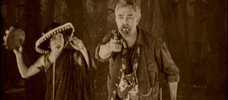
49-17
1917 -
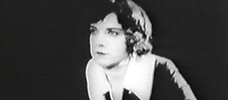
The Gun Woman
1918 -
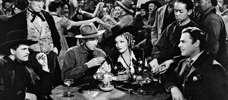
Destry Rides Again
1939 -
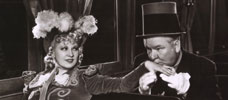
My Little Chickadee
1940 -
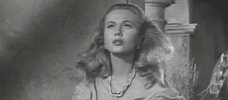
Colorado Territory
1949 -
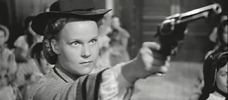
Westward the Women
1951 -
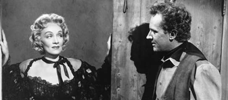
Rancho Notorious
1952 -
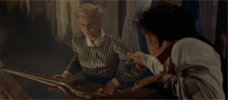
The Violent Men
1955 -
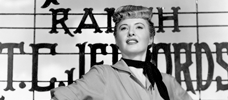
The Furies
1950 -
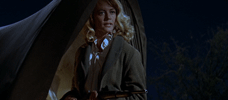
The Last Sunset
1961 -
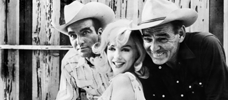
The Misfits
1961 -
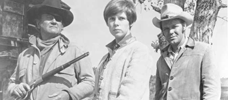
True Grit
1969 -
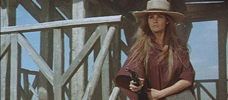
Hannie Caulder
1971 -
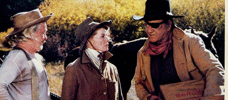
Rooster Cogburn
1975 -
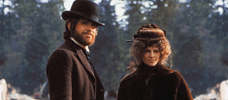
McCabe & Mrs. Miller
1971 -
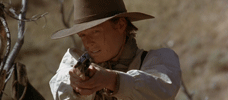
The Ballad of Little Jo
1993 -

The Quick and the Dead
1995 -
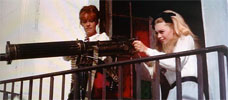
Viva Maria!
1965 -
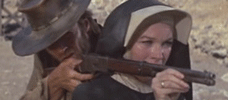
Two Mules for Sister Sara
1970
We don’t do comments anymore, but you may contact us here or find us on Twitter or Facebook.



